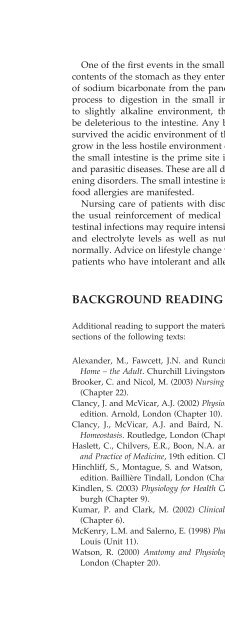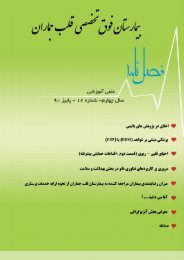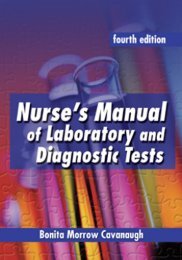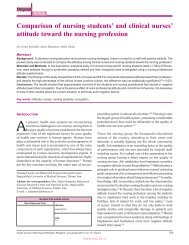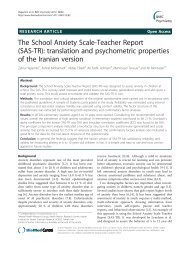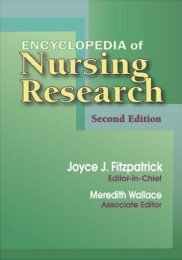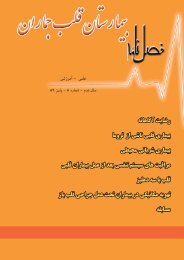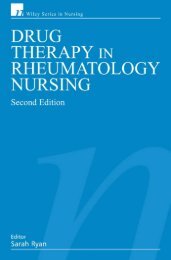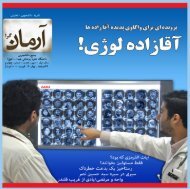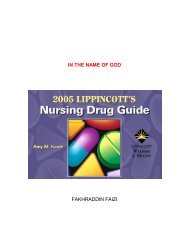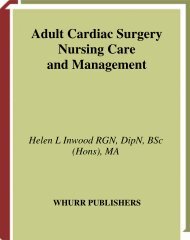Gastrointestinal Nursing.pdf
Gastrointestinal Nursing.pdf
Gastrointestinal Nursing.pdf
You also want an ePaper? Increase the reach of your titles
YUMPU automatically turns print PDFs into web optimized ePapers that Google loves.
The Small Intestine 73One of the first events in the small intestine is the neutralisation of the acidcontents of the stomach as they enter the duodenum, by the copious secretionof sodium bicarbonate from the pancreas. Apart from the importance of thisprocess to digestion in the small intestine, which takes place in a neutralto slightly alkaline environment, there is another consequence which canbe deleterious to the intestine. Any bacteria, viruses or parasites which havesurvived the acidic environment of the stomach may have the opportunity togrow in the less hostile environment of the small intestine and this means thatthe small intestine is the prime site in the gastrointestinal tract for infectiousand parasitic diseases. These are all debilitating and, in some cases, life-threateningdisorders. The small intestine is also the site where food intolerance andfood allergies are manifested.<strong>Nursing</strong> care of patients with disorders of the small intestine will involvethe usual reinforcement of medical diagnoses. Patients with acute gastrointestinalinfections may require intensive care and will require attention to fluidand electrolyte levels as well as nutritional status if they are unable to eatnormally. Advice on lifestyle change will be a major feature of nursing care forpatients who have intolerant and allergic conditions.BACKGROUND READINGAdditional reading to support the material in this chapter can be found in the relevantsections of the following texts:Alexander, M., Fawcett, J.N. and Runciman, P. (2000) <strong>Nursing</strong> Practice: Hospital andHome – the Adult. Churchill Livingstone, Edinburgh (Chapter 4).Brooker, C. and Nicol, M. (2003) <strong>Nursing</strong> Adults: the Practice of Caring. Mosby, London(Chapter 22).Clancy, J. and McVicar, A.J. (2002) Physiology and Anatomy: a Homeostatic Approach, 2ndedition. Arnold, London (Chapter 10).Clancy, J., McVicar, A.J. and Baird, N. (2002) Perioperative Practice: Fundamentals ofHomeostasis. Routledge, London (Chapter 2).Haslett, C., Chilvers, E.R., Boon, N.A. and Colledge, N.R. (2002) Davidson’s Principlesand Practice of Medicine, 19th edition. Churchill Livingstone, Edinburgh (Chapter 17).Hinchliff, S., Montague, S. and Watson, R. (1996) Physiology for <strong>Nursing</strong> Practice, 2ndedition. Baillière Tindall, London (Chapter 5.1).Kindlen, S. (2003) Physiology for Health Care and <strong>Nursing</strong>. Churchill Livingstone, Edinburgh(Chapter 9).Kumar, P. and Clark, M. (2002) Clinical Medicine, 4th edition. Saunders, Edinburgh(Chapter 6).McKenry, L.M. and Salerno, E. (1998) Pharmacology for <strong>Nursing</strong>, 20th edition. Mosby, StLouis (Unit 11).Watson, R. (2000) Anatomy and Physiology for Nurses, 11th edition. Baillière Tindall,London (Chapter 20).


